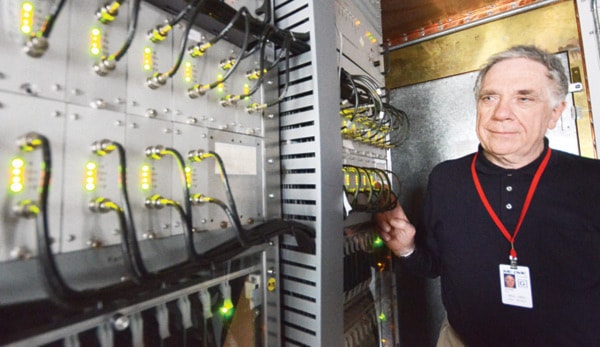At midnight on Dec. 31 a second was added to the time.
Around the world, some computer networks got confused, and engineers had to be called in. If adding a "leap second" causes such trouble, why do we do it?
For most of human history our lives consisted of getting up at sunrise, having lunch at noon, when the sun is high in the south, and then going to bed soon after sunset. Even in today's organized, synchronized and digital world, many people still live that way, by the sun.
The most urban citizens like to — if possible — travel to work and back home in daylight. If that is not possible, by adjusting our clocks to keep them in step with the sun most of us can at least travel to work in daylight. Mechanical clocks depend upon some sort of repetitive process, such as an oscillating spring or pendulum. These are liable to drift due to temperature changes or motion. They need to be regularly corrected to bring them back into step with "Solar Time."
One of the reasons the UK's Royal Greenwich Observatory was built was to make the astronomical observations necessary to correct the time. The result was Greenwich Mean Time (now called Universal Time). In Canada the Dominion Observatory was set up in Ottawa to be the national timekeeper. Surveying, navigation and transportation systems required accurate times to be maintained over large areas.
There are resonant processes in atoms that are very precisely periodic. Atomic clocks use these to provide times so accurate there is nothing in nature that can be used to correct them. They can provide accurate time almost indefinitely.
Greenwich went "atomic" in 1955. Ottawa went atomic in 1958. Our atomic clocks are operated by the National Research Council of Canada, and are the basis of our national time system. This is the origin of our familiar "at the beginning of the long dash" time message on the radio. There are now over 400 atomic clocks in operation around the world. The operators of these clocks get together regularly to make sure the national time systems around the world are all in sync.
One thing that has caused problems over the centuries is that the year — the time taken for the Earth to complete a complete orbit around the sun — is not a whole number of days. So we need occasionally to adjust our clocks and calendars. Every fourth year we add a day to February, giving it 29 days instead of 28. However, this is too big a correction, so we reduce it a bit by not applying this adjustment if the year is divisible by 400. Unfortunately, this does not fully solve the problem. So to keep our atomic clocks in step with our calendar and solar time, we insert an occasional "leap second" as needed. The precision of atomic clocks has revealed that the day is slowly getting longer by about 1.7 milliseconds a century. This is due to tidal interaction with the Moon. This is also pushing the Moon further away, by about 4 centimetres a year.
Digital networks around the world depend on accurate timekeeping, and the Global Positioning Satellite (GPS) navigation system requires precise clocks. These systems would be easier to operate if there were no need to worry about leap seconds. On the other hand, most of humanity still plans its working day by solar time, and keeping the clocks in step with the sun is important. This is making the whole issue of leap seconds a matter of intense international interest, and is under discussion at the UN's International Telecommunication Union. The objective is getting a workable solution acceptable to all. Time management pervades our lives and economies, so solving this problem is proving a challenge.
Venus shines brilliantly, low in the Southwest after sunset. Mars, redder and much fainter, lies to Venus' left. Jupiter rises in the early hours. The Moon will be Full on the 12th.
Ken Tapping is an astronomer with the National Research Council's Dominion Radio Astrophysical Observatory, Penticton, B.C.
